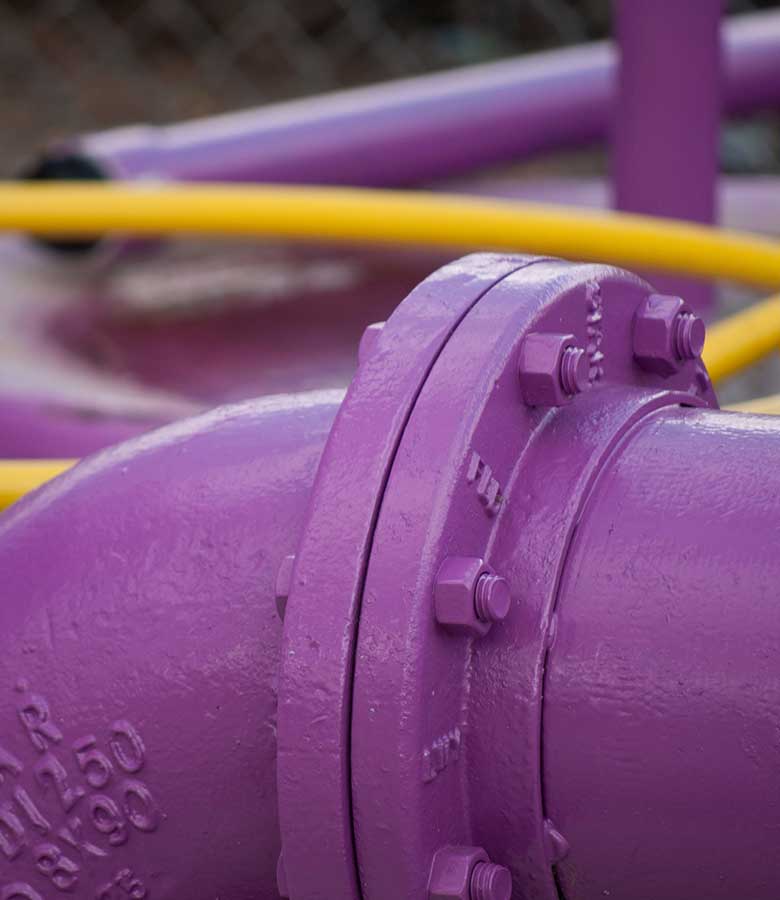Water recycling extends the Southland’s imported supplies and ensures that we will have reliable water sources for the future. Recycling is good for the environment because it makes good use of scarce resources. It’s also the right thing to do. Most of us recycle our newspapers and aluminum cans, why not our water?
Recent dry years and droughts have sparked interest in the need to recycle water as a cost-effective way of sustaining water resources. Water recycling follows nature’s lead in treating water so that it can be used for agricultural, commercial and landscape irrigation. Recycling or reclamation provides a stable source of water that can offset future dry spells while shoring up the reliability of Southern California’s water supply.
Fact Sheets and Best Practices Management
EVMWD Recycled Water Fact Sheet
EVMWD Recycled Water Fact Sheet: Wildomar/Summerly Service Area
EVMWD’s Best Practices Management for Recycled Water
Frequently Asked Questions
Is recycled water safe?
Yes. After the extensive treatment process, recycled water is clean and safe to irrigate playgrounds, other outdoor recreation areas, selected crops, pastures and many other uses. The processed water is clear and odorless as it flows out of reclamation plants, into streams and, eventually, to the ocean.
How is wastewater treated?
Reclamation plants follow and enhance the recycling process that occurs in nature by simulating the filtration, decomposition and disinfection processes that occur underground. Wastewater plants use settling, biodegradation, and disinfection to make the water safe for discharge into the ocean. All reclaimed water receives these initial layers of treatment, plus additional treatment needed to protect our freshwater lakes, streams, and groundwater basins.
Taking cues from nature
All water is recycled in nature. Every drop is part of the natural cycle of evaporation, rainfall or snowfall, and run-off flowing to the ocean. When Mother Nature treats water, sunlight kills pathogens, plants trap solids and adds oxygen, and beneficial bacteria “clean” the water, which then seeps through the soil, further filtering it. Reclamation and recycling follows nature’s example in purifying water, but accelerates the process with chlorination and filtering to remove dissolved salts and other impurities. By taking advantage of how nature has always purified water, reclamation and recycling provide a reliable and safe source of water for the region.
Who uses recycled water?
California is a national leader in water recycling research and has developed progressive policies that promote water recycling and reuse. Recycled water keeps schools, nurseries, parks and roadside greenbelts looking sharp. It is also used for groundwater recharge and industrial uses such as snowmaking, cooling machinery, firefighting, and street cleaning.
What is EVMWD doing with recycled water?
Recycled water begins as wastewater from our homes and businesses. It is then treated, filtered and disinfected, often discharged into a water body such as a river, stream or ocean. EVMWD however, provides an additional level of treatment, called “tertiary” treatment which uses a state-of-the-art ultraviolet system to remove 99.9 percent of pathogens. “Tertiary” treated water is so highly cleaned that it is safe for human contact, and more than 27,000 acre-feet of recycled water are used throughout Riverside County each year. An acre-foot is approximately 326,000 gallons of water, enough water for two average families for one year. Recycled water uses include irrigating crops, golf courses, fishing lakes, landscape irrigation and wetlands enhancement.
Recycled water is an affordable and reliable resource and will play a significant role in Lake Elsinore’s future. Long plagued with severe seasonal evaporation losses, Lake Elsinore is a natural recreational lake that annually loses 14,000-acre feet of water to evaporation. In January 2002, the Regional Water Quality Control Board granted EVMWD a permit to discharge recycled water via its Regional Wastewater Treatment Plant into Lake Elsinore for two years under a pilot project to research the effects of recycled water on the lake—the treatment plant already discharges four million gallons of tertiary treated water a day into the Temescal Creek. On June 28, 2002, members of the Recycled Water Task Force, the EVMWD Board of Directors and staff and Lake Elsinore City officials joined to celebrate the first release of recycled water into Lake Elsinore. This is the first time that recycled water has been released into a recreational lake in California. About 2,000-acre feet of recycled water is being released in the remaining six months of 2002.

